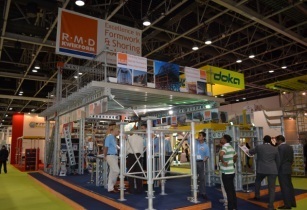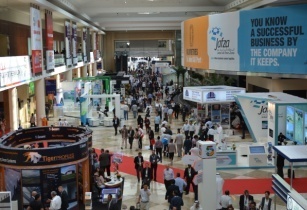Page 2 of 2
Spreading its wings
As usual, the show will welcome exhibitors from a host of countries, including Turkey, the UK, China, the USA and India, while UAE home-grown firms will be looking to stand shoulder to shoulder with their international competitors to prove that the lofty ambitions of the region's leading contractors can be achieved by using their products.
Having exhibited at The Big 5 since 2011, UAE-based IBS Ramfoam will be one of the many local firms returning to DWTC this year.
Tim Mulqueen, commercial director for IBS Ramfoam, remarked, "There will be an estimated $5 trillion spent in the construction industry within the next four years. The UAE is really back and open for business."
Over the past 12 months, The Big 5 brand has spread it wings with sister events taking place in Saudi Arabia, Kuwait and India. As the Big 5's international appeal grows, its regional relevance is strong as ever with businesses from across the GCC using the platform to promote themselves to the market.
A recent Big 5 preparatory meeting, hosted by Tasdeer ? the Qatar Development Bank's (QDB) export arm?attracted representatives from 33 Qatari companies. QCD officials briefed the participants on the steps the bank will take to make a strong impact of Qatari companies at the Dubai trade fair. At the main event Tasdeer will host the 360 sqm Qatar Pavilion.
Abdulaziz bin Nasser Al Khalifa, CEO of QDB, said, "Based on last year's successful event, we are proud to organise the Qatari companies' participation. The aim is to develop export opportunities and open new horizons for these companies, which are part of our main pillars at QDB, and thus enhance the role of the private sector in exports.
"We are helping them build strong global partnerships and introduce Qatari companies," he added.
Among the many foreign delegations from further afield will be the Arab Brazilian Chamber of Commerce, which will be bringing at least five companies, including ceramic facing firm Itagres, and ornamental stone companies PBA Stones and Pettrus.
Joining the Brazilian delegation will be Mauricio Buccini, a trader for the paint company Universo Tintas. The firm, making only its second appearance at the show, will look to continue building relationships it has already established with businesses from across the GCC, as well as making a host of new contacts.
"We are hoping to close a cycle initiated in 2010, when we went to the Feicon fair (in Brazil), where we came into contact with a client from Abu Dhabi, Cristal," Buccini remarked.
"This year, the Arab Brazilian Chamber brought a delegate from the company to the Confederations Cup buyer project. He paid a visit to our headquarters, and we will meet with him at the Big 5. We will go to the fair to meet with this executive, and also to try and break into new markets."
Making its trade show debut will be RGenau Industries. The German firm plans to use the construction industry platform to launch its new range of surface technologies for the sanitary industry.
Sebastian Sch?fer, responsible for international communication and project development at RGenau, said, "We chose The Big 5 as the first trade fair we will ever exhibit at because we see it as an excellent platform to introduce our new products and to establish business contacts."
Event director Andy White said, ?The event has become synonymous with launching new products and innovations into the market, but to see so many international companies seeking out this opportunity for the first time this year is testament to the strength of the Middle East marketplace.?
There can be no doubt, despite setbacks in recent years, that the construction market across the GCC remains resilient, profitable and, perhaps most importantly, innovative.
The 2013 edition of Big 5 looks set to enhance the show's reputation for consistency by bringing the latest technologies and solutions from across the globe and introducing them to the Middle East.
This article originally featured in Technical Review Middle East Issue 5 2013







